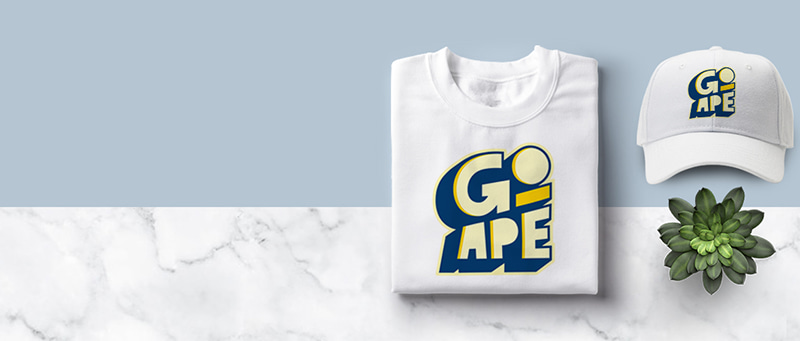Recognizing Clothes: The Importance of Material Selections in Your Wardrobe
The option of material in apparel plays an essential role in both looks and performance. Various materials provide differing degrees of resilience, convenience, and breathability, directly affecting the user's experience. Understanding these nuances can improve one's closet markedly. Many neglect exactly how these selections can affect not just personal design, yet likewise sustainability. What textile decisions could redefine your closet and straighten it with both style and obligation?
The Role of Textile in vogue and Functionality

Typical Fabric Types and Their Characteristics
When choosing clothes, comprehending the features of common material types is important for making notified options. Cotton, a widely-used all-natural fiber, is recognized for its adaptability, soft qualities, and breathability, making it suitable for sportswear and day-to-day garments. Linen, another all-natural alternative, boasts outstanding moisture-wicking properties and a distinctive texture, perfect for cozy climates.Wool, typically favored for its heat and toughness, varies in fineness; merino woollen is soft versus the skin, while coarser types are made use of for outerwear. Synthetic textiles like polyester and nylon provide resilience and resistance to wrinkles, making them popular for activewear and travel garments. Blends, which integrate artificial and natural fibers, can enhance capability while keeping convenience. By acknowledging these textile characteristics, people can choose garments that aligns with their lifestyle and aesthetic preferences.
Breathability and Convenience: Picking the Right Fabrics for Different Climates
Picking the appropriate materials for different climates can considerably improve convenience and total wearability. Breathable materials are vital in hot environments, as they allow air blood circulation and dampness evaporation. Fabrics such as cotton, bed linen, and moisture-wicking synthetics successfully draw sweat far from the body, keeping the user cool and completely dry. On the other hand, in chillier environments, thicker fabrics like woollen or fleece give insulation while preserving breathability, making sure heat without overheating.Additionally, the choice of textile weight plays an essential function; lightweight materials are more suitable for summer season, whereas much heavier choices are suited for winter wear. Comprehending the special residential properties of each material enables people to clothe suitably for differing weather. Ultimately, picking breathable and comfortable textiles tailored to specific environments can greatly improve everyday comfort and improve the overall experience of using apparel.
Durability and Treatment: Just How Fabric Influences Durability of Your Wardrobe
Choosing the right materials can substantially influence the resilience and treatment needs of a wardrobe. Fabrics such as cotton and polyester are understood for their strength and convenience of upkeep, making them excellent for everyday wear. On the other hand, fragile materials like silk and shoelace call for even more cautious handling and specialized cleaning approaches, which can increase the moment and effort required for care. Branded Clothing.Durability is likewise influenced by the material's weave and finish; firmly woven materials tend to stand up to wear and tear much better than freely woven options. In addition, artificial blends commonly supply enhanced toughness, incorporating the very best high qualities of numerous fibers.Understanding the care guidelines for each textile is important, as improper cleaning or drying can lead to early wear. Ultimately, picking sturdy products can bring about a longer-lasting closet, decreasing the regularity of substitutes and adding to a much more sustainable fashion selection
The Influence of Textile on Fit and Shape

Lasting Fabric Choices: Making Eco-Friendly Decisions
The influence of fabric prolongs beyond fit and silhouette to encompass ecological factors, triggering an expanding interest in lasting fabric options. Eco-friendly textiles, such as organic cotton, hemp, and Tencel, are obtaining grip amongst consumers that prioritize sustainability in their closets. These products are typically created with fewer chemicals and water, lowering their ecological footprint.Additionally, recycled fabrics, made from post-consumer waste, use an innovative service to the fabric sector's pollution trouble. Brands progressively accept openness in their sourcing techniques, enabling consumers to make enlightened decisions about their purchases.Choosing lasting fabrics not just sustains honest methods but additionally urges the style industry to take on even more liable production methods. As understanding of ecological problems rises, people are advised to review the lasting effect of their textile selections, cultivating a movement in the direction of a more lasting and eco aware strategy to style.
Elevating Design: Just How Textile Can Transform an Attire
While numerous may concentrate on color and cut when selecting an outfit, the option of textile plays an important duty in elevating style and boosting total appearance. Different materials convey distinct state of minds and messages; as an example, silk emanates luxury and class, while jeans provides an informal, relaxed vibe. The appearance and drape of a fabric can considerably modify the silhouette, with structured materials supplying a refined look and softer ones producing a more fluid, unwinded aesthetic.Moreover, the weight of the fabric affects wearability throughout seasons. Lightweight materials like linen and cotton are ideal for summer, while much heavier products such as woollen and velour offer warmth and sophistication in colder months. Recognizing textile residential or commercial properties, such as breathability and stretch, likewise equips people to make educated selections that improve convenience without compromising style. Eventually, the best material can change an attire from average to phenomenal, making it an important factor to consider in any kind of wardrobe.
Regularly Asked Inquiries
Just how Do I Recognize the Material Content of My Apparel?
To determine material content, one can check out treatment labels, conduct burn examinations for fiber recognition, or get in touch with textile examples. These approaches aid set apart materials, ensuring notified choices for garments treatment and upkeep in everyday wear.
Can Textile Selection Affect My State Of Mind or Confidence?
Fabric selection can greatly impact a person's mood and self-confidence. Branded Clothing. Particular materials might evoke click to read more sensations of convenience or elegance, while others can really feel unflattering or restrictive, eventually affecting self-perception and emotional well-being throughout the day
What Fabrics Are Ideal for Delicate Skin?
For individuals with delicate skin, all-natural fabrics like bamboo, bed linen, and cotton are typically recommended. These products are breathable, hypoallergenic, and much less most likely to cause inflammation, making them suitable choices for comfort and skin health.
Just how Do I Properly Laundry and Look After Various Fabrics?
To correctly care and clean for various materials, one have to consider each material's certain demands, consisting of temperature level settings, detergents, and drying out methods, ensuring longevity and preserving the fabric's original high qualities for perfect use.
Exist Certain Fabrics for Athletic or Performance Wear?
Sports or performance wear often makes use of materials such as polyester, spandex, and nylon. These products are created for moisture-wicking, breathability, and flexibility, enhancing movement and comfort during exercises while supplying sturdiness and support. On the other hand, in cooler environments, thicker materials like wool or fleece give insulation while retaining breathability, making sure heat without overheating.Additionally, the selection of textile weight plays an important role; lightweight fabrics are better for summer season, whereas much heavier alternatives are matched for winter season wear. In comparison, fragile materials like silk and lace require more careful handling and specialized cleaning techniques, which can enhance the time and effort needed for care.Durability is likewise influenced by the fabric's weave and coating; firmly woven textiles often tend to withstand wear and tear better than loosely woven alternatives. In contrast, rigid textiles can limit activity however offer a classic, sleek look.Moreover, the thickness and appearance of the fabric can affect the visual assumption of body form. The impact of material extends past fit and silhouette to encompass ecological elements, motivating an expanding interest in lasting fabric options. The structure and drape of a textile can significantly change the shape, with structured textiles providing a polished look and softer ones creating a much more fluid, loosened up aesthetic.Moreover, the weight of the fabric affects wearability throughout seasons.